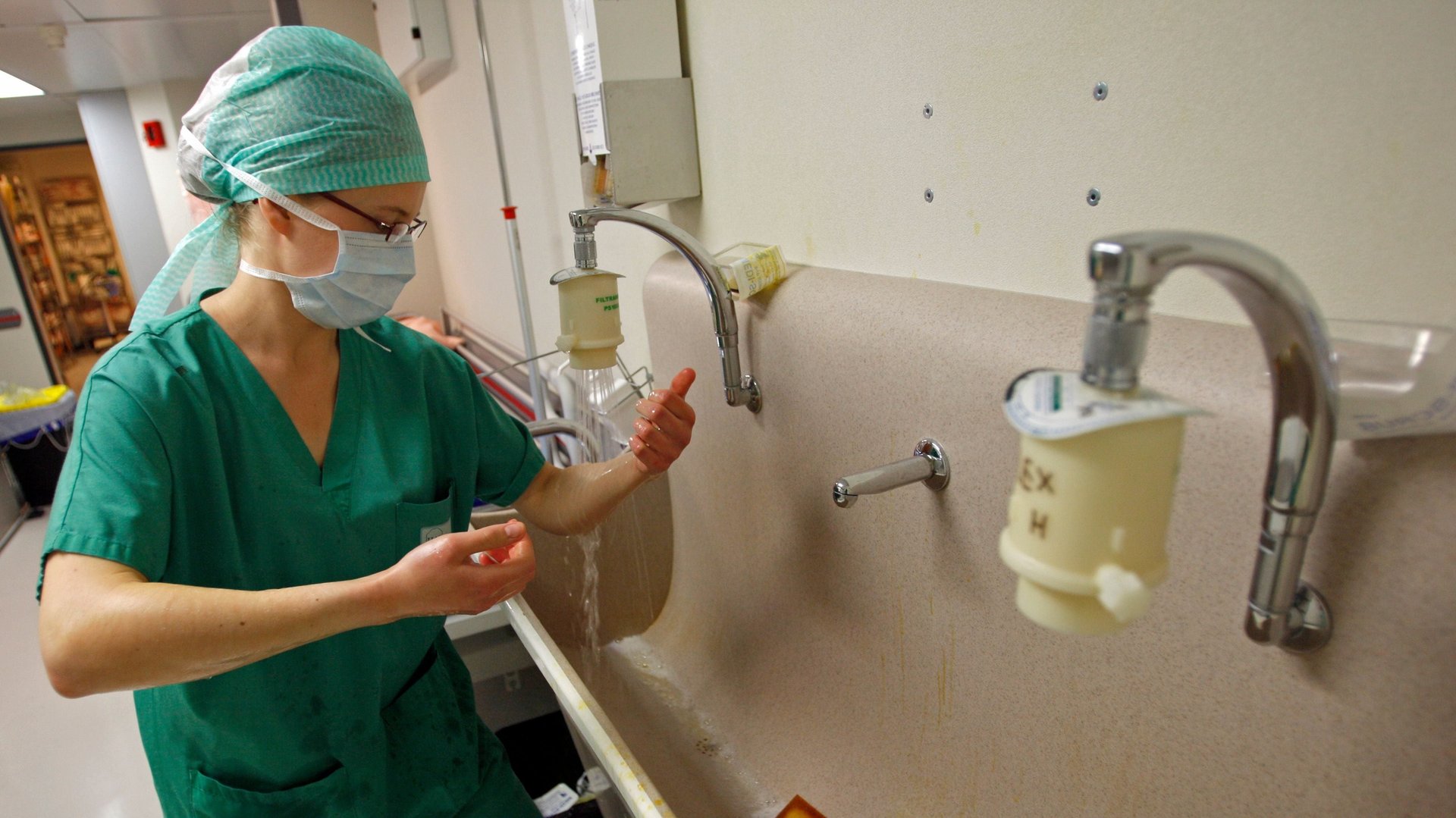A report by the NIH Clinical Center shows how stealthy multi-drug-resistant bacteria can be
Bacteria do not discriminate. They thrive anywhere they have the opportunity to do so, including in one of the premier clinical centers in the US.


Bacteria do not discriminate. They thrive anywhere they have the opportunity to do so, including in one of the premier clinical centers in the US.
Researchers from the National Institutes of Health (NIH) published a report Wednesday (Dec. 26) describing an investigation that found there had been 12 cases of a rare, multi-drug-resistant infection at its clinical center in Bethesda, Maryland, between 2006 and 2016. These infections were caused by the bacteria Sphingomonas koreensis, which lives in water and is naturally resistant to several types of antibiotics. The investigation found S. koreensis in 22 out of 56 sampled hospital faucets and from nine of 17 water samples from sinks in patients’ rooms. Three of the infected patients died with these infections, although they had other infections at the time that could have been responsible for their deaths. (In the same time period, there were 18 other infections caused by different species of Sphingomonas bacteria, but these could be treated with antibiotics.)
NIH researchers realized something was wrong when four patients developed infections from S. koreensis within a span of six months in 2016. Hospital infections unfortunately are fairly common—the US Centers for Disease Control estimates that roughly one in 31 hospital patients has some sort of infection from their health-care facility at any given time. However, these infections are usually ailments like pneumonia, E. coli, staph, or C. diff.
S. koreensis was discovered in Korea in the early 2000s, and was first documented to infect humans in 2015. The fact that it popped up four times within a six-month window, the researchers realized, likely meant that the bacteria was lurking within the NIH facilities.
The four cases identified from 2016 were highly similar to one another, and resistant to multiple types of antibiotics. These cases triggered the hospital to sample several water sources within the building. The other eight cases of rare infection were found through the investigation of records.
Normally, this type of bacteria wouldn’t cause much harm to people. S. koreensis “are fairly weak bacteria,” Tara Palmore, an epidemiologist at the center and a co-author of the NIH report, told STAT. However, people at the clinical center were already at risk for infection—nine of the 12 patients had received stem cell transplants, including the three who died and had other infections.
After finding several sites of the bacteria’s home, the NIH also identified low-levels of chlorine in the water, and low hot-water temperatures, both of which would normally kill off the bacteria. It was easy to correct these levels, and no one at the center has gotten sick from S. koreensis since 2016.
While it may seem scary that a major research hospital was found to be a home for such microbes, it’s not particularly surprising when you realize that bacteria make their way everywhere.
Correction: An earlier version of this article stated that six cases involved S. koreensis, when in fact four did. The other cases were caused by different species of Sphingomonas that could be treated with antibiotics. We’ve also replaced the term “superbug” with “multi-drug-resistant bacteria” to indicate that some bacteria are naturally resistant to multiple types of antibiotics.